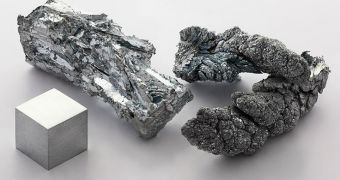A team of researchers at the University of Michigan has recently finished conducting a new scientific study, which provides a better view into the role that zinc and a protein called amylin play in the development of type II diabetes.
One of the things that experts knew about amylin when the research effort began was that the protein tended to clump together in diabetes patients. As such, the group focused its attention on analyzing the interplay between zinc and amylin.
Clumps made out of amylin are harmful because they tend to shut down insulin-producing cells in the pancreas, rendering the body unable to process sugar molecules. But zinc has always been known to prevent amylin from clumping together.
What the U-M team did was to provide a deeper insight into how the chemical performs its important “security guard” function. The most important finding was that amylin is a two-faced protein.
In a paper to be published in the July 8 issue of the esteemed Journal of Molecular Biology, scientists explain how amylin is in fact involved in blood sugar regulation, when zinc levels inside cells are within normal parameters.
The amylin analog Symlin is actually used to treat diabetics. When paired with insulin, it produces a host of positive effects. But the protein can also cause widespread damage within cells, when zinc levels are very low, and the chemical can no longer exert its protective function.
The troublesome protein is also known as Islet Amyloid Polypeptide (IAPP). When unregulated, it can come together to form clumps similar to those discovered in neurodegenerative conditions such as Alzheimer's, Parkinson's and Huntington's.
According to U-M College of Literature, Science, and the Arts chemistry and biophysics professor Ayyalusamy Ramamoorthy, the accumulation of amylin leads to the creation of ribbon-like structures called fibrils inside cells.
Over the years, fibril formation has been associated with a large number of diseases, and so experts naturally assumed that the fibrils themselves were toxic. The new study is showing that shorter snippets which assemble when fibrils are forming may in fact be responsible.
One of the ways zinc interacts with amylin to prevent it from forming clumps is by binding to a special receptor in the middle of the molecule. This makes the protein kink, preventing it from clumping. This is done by making one end of the amylin protein, the N-terminus, more orderly.
“This is significant, because the N-terminus is very important in clump formation and amylin toxicity,” Ramamoorthy explains, saying that researchers will now have to take this work even further in order to obtain positive results, and maybe even new cures for diabetes.

 14 DAY TRIAL //
14 DAY TRIAL //